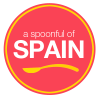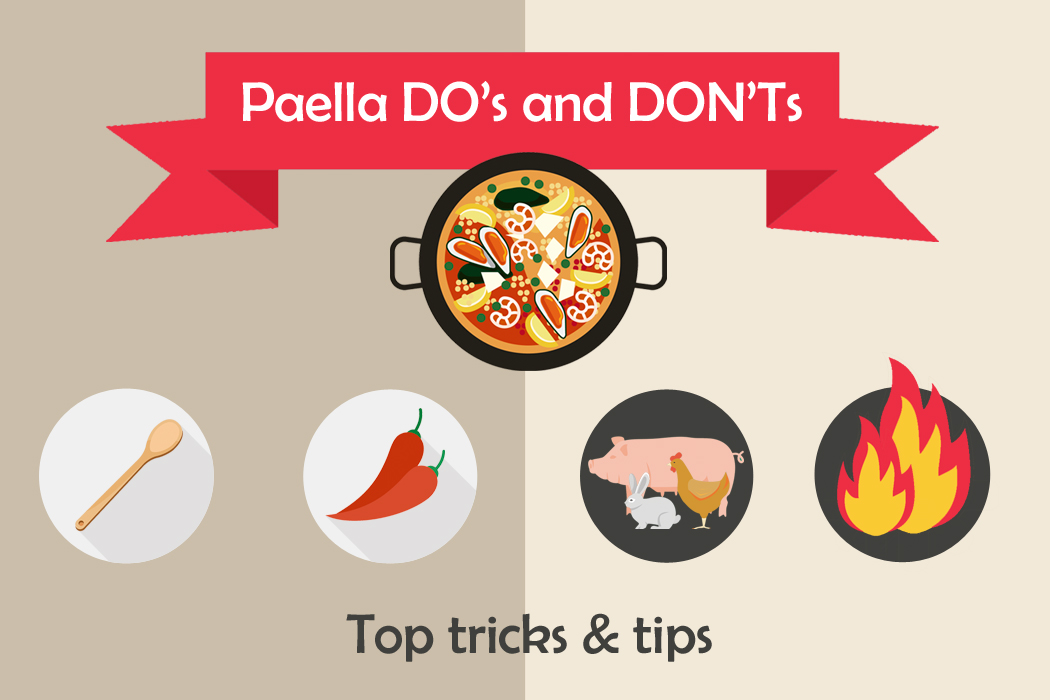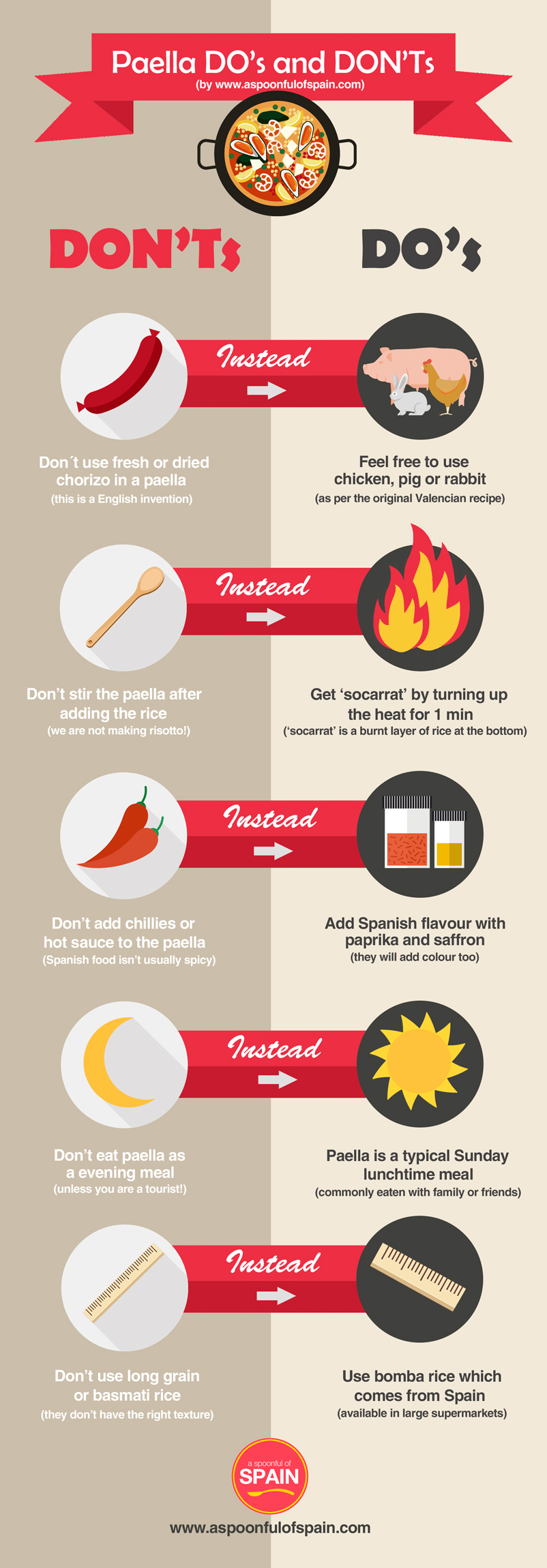Paella Do’s and Don’ts (with Infographic)
Whenever anyone finds out that Sevi is Spanish, the first question they ask is ¨Does he cook paella for you?¨. The answer is yes, of course, but perhaps not the paella you know and love. There are as many ‘authentic’ paella recipes as there are grains of rice in a paella, but there are some basic rules that most Spanish people follow. Read on to discover the do’s and don’ts of paella in our handy infographic.
(Keep reading to the bottom to see our paella do’s and don’ts infographic!)
DON’T: Add chorizo to your paella. Sorry guys, but this is a big no-no! Spanish people laugh in my face when they find out that British people do this. I guess it’s the equivalent of Spanish people making Eton Mess with bananas – delicious, but undeniably wrong! There are Spanish rice dishes with both fresh and dried chorizo, but that’s a whole other recipe.
DO: Use other meats, such as chicken, pork or rabbit. The original recipe contained both rabbit and snails, but there’s no need to go raiding your back garden. Pork and chicken make a delicious meat paella, or you could use squid rings, mussels, prawns and clams for a seafood paella. For the truly indecisive, a paella mixta contains both meat and seafood!
DON’T: Stir the paella after adding the rice. Most valencianos agree that the rice should be added to the hot stock in a cross shape. This video shows you how (don’t worry about the Spanish, just watch!). After that, you can gently push the rice out to the edges of the pan, but that’s it! No more stirring – this isn’t a risotto!
DO: Turn up the heat in the final minutes to get ‘socorrat’. A combination of not stirring the rice and a blast of heat once the stock has been absorbed will give your paella the legendary ‘socorrat’. Socorrat is a layer of rice stuck to the bottom of the pan, which gets burnt and crunchy. For many people, the socorrat is the best part of the paella.
DON’T: Be tempted to add chillies or hot sauce. Spanish food is often confused with Mexican food, but they are worlds apart. Spanish food is not spicy at all, and even Spanish dishes like patatas bravas, which are advertised as spicy, are very mild for a British palate.
DO: Add authentic Spanish flavour with paprika and saffron. These spices help to flavour the rice, and give the it its gorgeous yellow colour. We always buy Pimenton de la Vera (sold in large supermarkets), which comes from Extremadura in Spain. If your budget can’t stretch to saffron, do as the Spanish grandmothers do, and add some yellow food colouring instead!
DON’T: Eat paella at night. This is a difficult one, because Spanish people tend to eat a larger meal at lunchtime, and a smaller meal at night, while we tend to do the opposite. For this reason, it’s very unusual to see people eating paella at night in Spain, as rice is too heavy for an evening meal. A good rule of thumb in Spain is that if a restaurant serves paella at night, it’s just for tourists!
DO: Eat paella at lunchtime, preferably on a Sunday! Paella is a classic Sunday lunchtime meal, designed to be lingered over with friends and family. If you have a large pan, you can cook and serve your paella in it. Just hand out forks and let everyone get stuck in!
DON’T: Use long grain or Basmati rice. In a pinch, they’ll do, but you won’t get that distinctive dry texture.
DO: Use bomba rice (arroz bomba). This short fat rice is the perfect paella rice. It is grown all along the east coast of Spain, so look out for rice that comes from Valencia or Alicante for an authentic taste. Pick up a bag in Spain for under a euro, or check out your local supermarkets!
Do you commit any of these paella don’ts? Do you have any other tips for the perfect paella? Tell us your tricks in the comments section below!



Great, I love it!
This is awesome ! Thank you
Thank you! I was very stupid and bought °paella spices° at the supermarket. It turned my paella a brownish color and was so piccante my tongue was tingling. A friend tried to convince me that some paella was piccante spicy and I thought I was the fool. Thank you! I will never make the same mistake again.